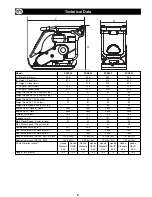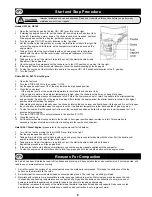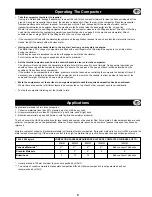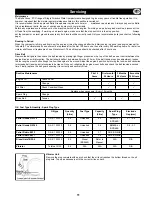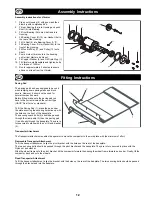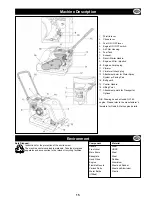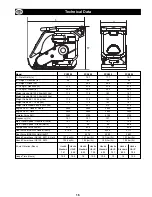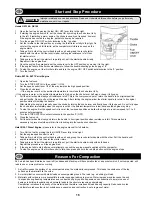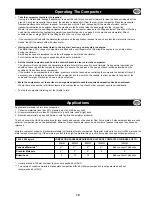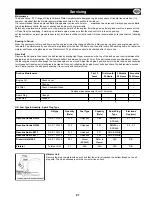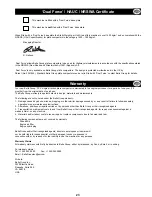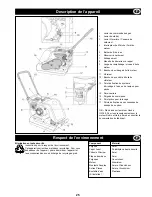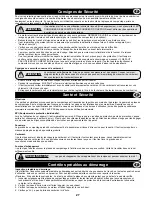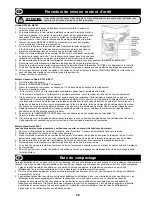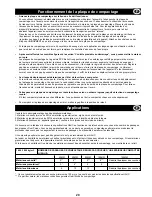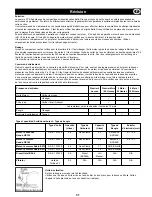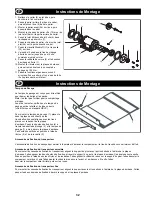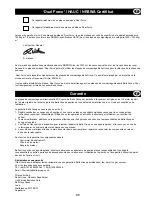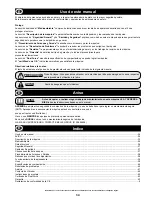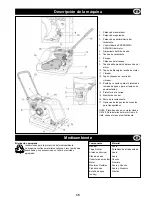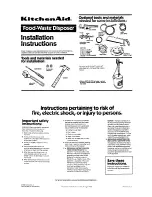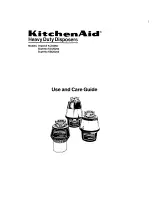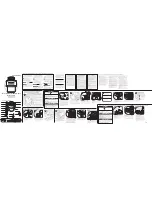
20
Stage 1:
The full base area compacts the material like a standard machine.
Stage 2:
The base rises onto the ‘Dual Force’ section to give 3 to 4 times the compaction force of standard plates.
Compaction Speci
fi
cation
Various methods have been employed in the past to specify the compaction required for various applications. The factors to consider
are, material properties, layer thickness, pressure applied, vibration and number of passess. Greater
understanding of how compaction works has lead to new compaction speci
fi
cations being introduced.
The most up to date speci
fi
cation is part of the U.K.’s NRSWA (New Roads & Street Works Act). Civil Engineers are now adopting
these speci
fi
cations to ensure good compaction for all site work.
NRSWA (HAUC speci
fi
cation).
The speci
fi
cation was compiled by HAUC (Highways Authorities & Utilities Committee).
The ‘New Roads and Street Works Act 1991, set a new standard for road repairs and reinstatements in the UK. It covers materials,
methods, equipment and safety when carrying out reinstatements on roads and footways.
The reason for the act is to ensure repairs and reinstatements are carried out to a higher standard and ultimately last longer. This in
turn will reduce the need for costly remedial work and reduce traf
fi
c delays.
There are two categories speci
fi
ed for plate compactors.
1. 1400 to 1800kg/m²
2. Over 1800kg/m²
These
fi
gures relate to the static pressure applied by the machine
NOTE:
No standard single direction plate compactors comply with this minimum speci
fi
cation. For highways work always use a ‘Dual
Force’ plate compactor.
DUAL FORCE
Belle Group studied the act then developed and patented equipment to enable contractors to comply with the act’s requirements.
The NRSWA legislation requires that compaction equipment meets the minimum speci
fi
cation. By purchasing an Belle Group ‘Dual
Force’ plate, you are immediately complying with this part of the act. To comply with the speci
fi
cation and maintain surface tolerance,
Belle Group ‘Dual Force’ base plates are divided into two areas providing two stages of compaction.
Troubleshooting Guide
Problem
Cause
Remedy
Engine will not start.
No fuel.
Open fuel tap.
Fill
fuel
tank.
Engine switched off.
Switch engine on.
Spark plug fouled.
Clean and reset plug gap.
Engine
cold.
Close
choke.
Engine
fl
ooded.
Honda, open choke, fully open throttle, pull recoil starter
until
engine
fi
res.
Hatz, move speed control to stop, pull recoil starter 5
times then repeat start procedure.
Engine still will not start.
Major Fault
Contact Agent or Belle Group.
Unit will not vibrate.
Engine speed too slow.
Set engine speed control to fast.
Drive belt tension loose.
Adjust belt tension.
Air
fi
lter blocked.
Clean or renew air
fi
lter.
Drive failure.
Contact Agent or Belle Group.
Vibrator failure.
Contact Agent or Belle Group.
Asphalt adhering to plate. Lack of lubrication.
Use a water spray system.
Paving blocks damaged. Plate in direct contact with material.
Use a paving pad.
Standard pad used on Dual Force plate.
Fit correct Dual Force Pad
Bituminous surface
Over compaction.
Remove and relay.
fl
aking
(laminating).
Low travel speed
Layer thickness too deep.
Remove some of the material.
(plate sinking).
Moisture content too high or too low.
Remove material and adjust.

